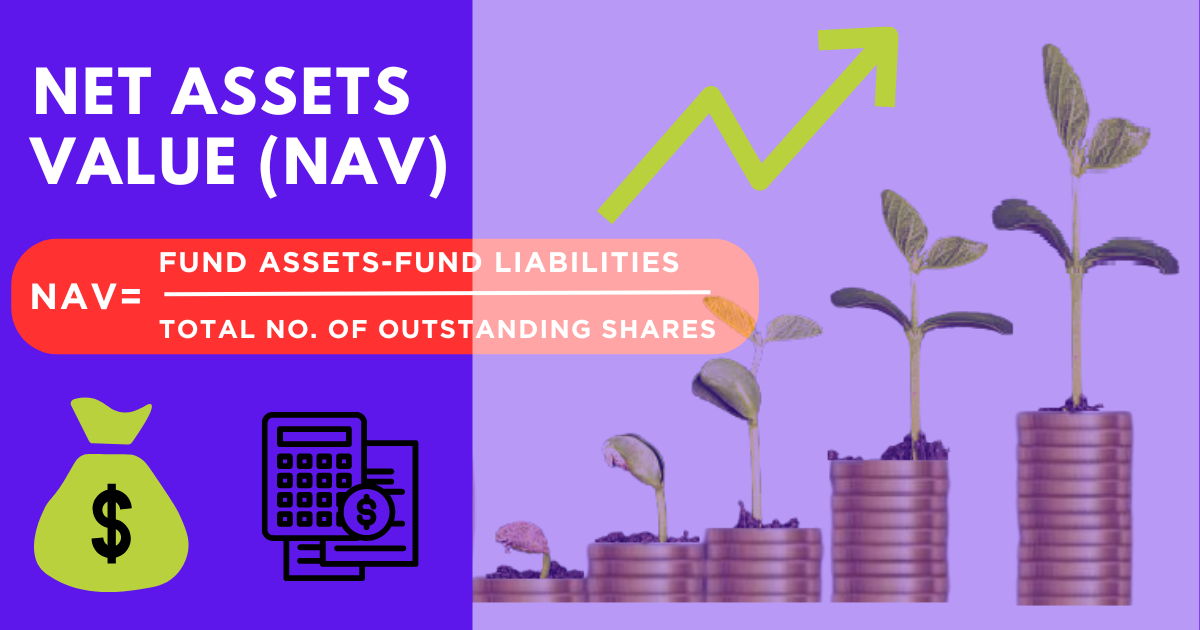
Net Asset Value (NAV) is a very important term to understand when it comes to mutual funds. In this detailed guide, we'll go into the world of NAV and look at what it means, how it's figured, and how it affects the price of mutual fund shares.
To figure out how well your mutual fund purchases are doing and how much they are worth, you must understand NAV. By the end of this article, you will have a clear idea of what NAV is and how it can help you make the best investment choices.
Table of Contents
What Does NAV Mean for Mutual Funds?
Let's start with the basics of NAV so you can understand what it is. The Net Asset Value of a mutual fund is the value of its assets per share. It is found by dividing the total value of a fund's assets minus its debts by the number of shares that are still in circulation.
NAV is a mutual fund's true value at a certain point in time. It is usually calculated at the end of every trading day. By knowing what NAV is, investors can figure out how much their mutual fund purchases are worth.
How NAV is used to price mutual funds
NAV is a key part of figuring out how much it will cost to buy or sell shares of a mutual fund. The NAV of a mutual fund is directly related to the price of its shares. Mutual funds are usually bought and sold at their NAV, which means that investors buy and sell shares at the fund's estimated value.
When there is more desire for shares, the price of each share may go up above the NAV. This is called a premium.
On the other hand, if there is pressure to sell, the share price may drop below the NAV, which would result in a discount.
Investors can use the NAV to figure out if a mutual fund is selling at a premium or a discount by keeping an eye on it.
How to figure out the NAV of a mutual fund
To figure out NAV, you have to add up all of a mutual fund's assets and subtract all of its liabilities. The process includes putting a value on each stock, bond, and other item in the portfolio. Most of the time, these values are based on market prices, which can change throughout the day. Once the total value of the fund's assets is known, the fund's debts, like fees and costs, are taken away. The NAV is found by dividing this number by the number of shares that are still in circulation. It's important to know that NAV is calculated per share, so investors can get a good idea of how much their shares are worth.
How to Understand Net Asset Value (NAV) and Investment Performance
NAV is a key way to measure how well mutual funds are doing as investments. By looking at the NAV over different time periods, buyers can see if the value of the fund has gone up or down.
If the NAV goes up, it means that the value of the fund's assets has gone up, which is a sign of good financial performance.
On the other hand, a falling NAV means that the value of the fund's assets has gone down, which is a sign of poor performance.
By knowing NAV, investors can keep track of how their mutual fund investments are doing and make choices based on their investment goals and how much risk they are willing to take.
What NAV can't do?
NAV is a good way to figure out how much a mutual fund is worth and how well it is doing, but it has some flaws that buyers should be aware as given below:
- NAV doesn't take into account any fees or costs that come with buying or selling shares of a mutual fund. These costs can affect the overall results and should be taken into account along with NAV when figuring out if an investment is profitable.
- NAV is calculated at the end of the trading day, so it may not show how the market is doing right now. The value of a mutual fund's core assets can change throughout the day, so investors should remember that NAV is just a snapshot of the fund's value at a certain point in time.
- Comparing the NAVs of different mutual funds may not tell you everything you need to know about how well they are doing. Even if their NAVs look the same, factors like a fund's investment plan, risk profile, and asset allocation can have a big impact on how well it does.
- Even with these problems, NAV is still a useful way for buyers to figure out how much mutual funds are worth and how well they are doing. It gives owners a clear and consistent way to figure out how much a fund is worth and shows them how their investments have grown or shrunk over time.
Conclusion:
Buyers in mutual funds must know what Net Asset Value (NAV) is. It is a key measure for figuring out how much a fund is worth, how much its shares are worth, and how well it is doing.
By keeping an eye on NAV, investors can make decisions based on their financial goals and how much risk they are willing to take.
But it's important to think about NAV along with other things, like transaction costs, the state of the market, and the fund's unique features.
With a good grasp of NAV, buyers can find their way around the world of mutual funds and get the most out of their investments.






Leave a comment